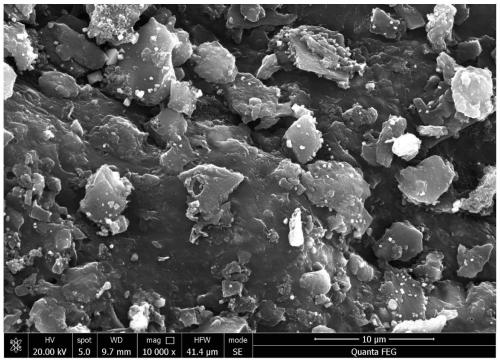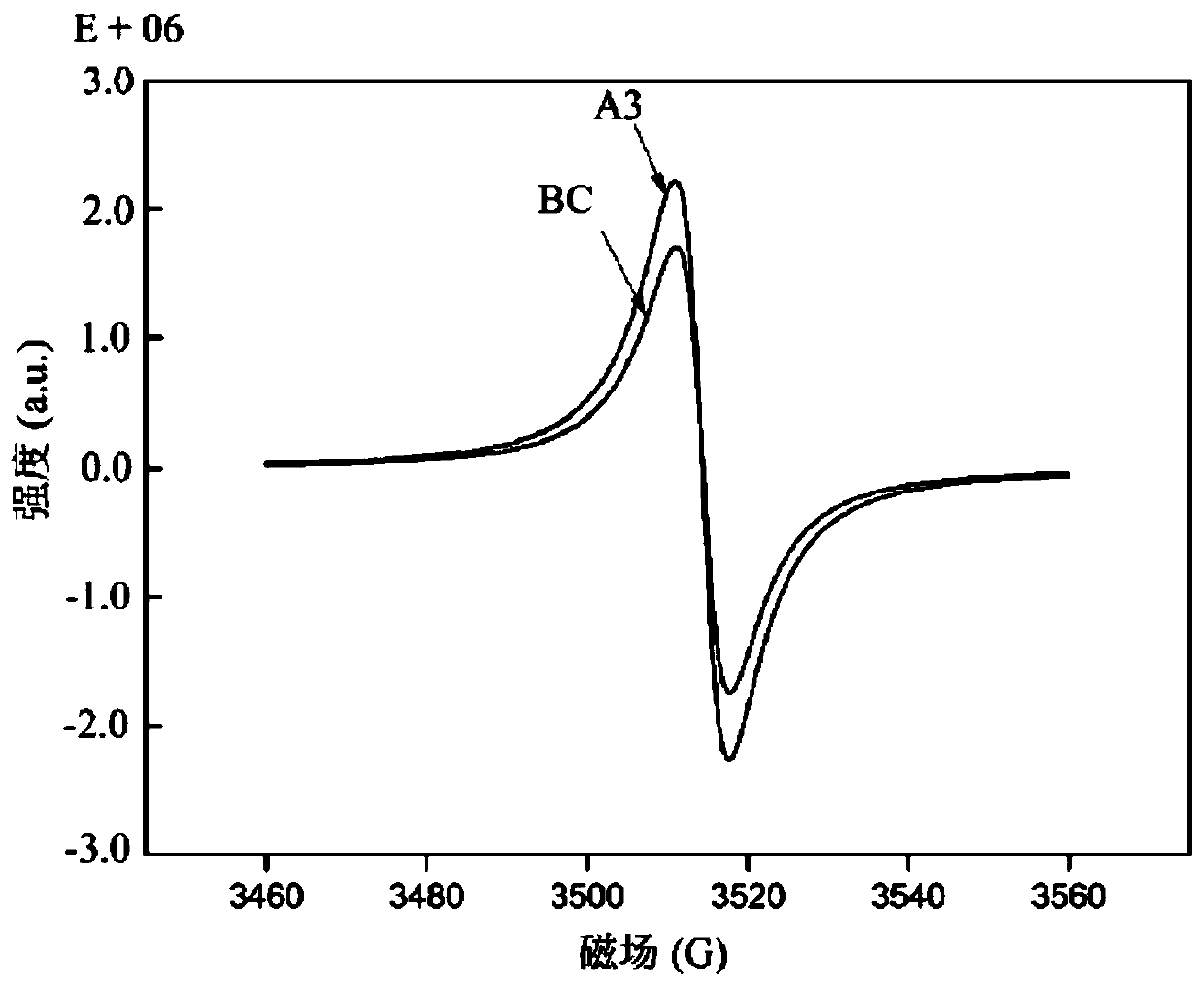A method for removing polycyclic aromatic hydrocarbons in water by using iron-manganese double metal oxides to modify biochar-photo-Fenton composites
A technology of bimetallic oxides and composite materials, applied in the direction of metal/metal oxide/metal hydroxide catalysts, chemical instruments and methods, oxidized water/sewage treatment, etc., can solve the problem of slow regeneration of active sites and impact on degradation Efficiency, narrow applicable pH range and other issues, to achieve strong hydrogen peroxide decomposition ability, improve catalytic performance, and good catalytic performance
- Summary
- Abstract
- Description
- Claims
- Application Information
AI Technical Summary
Problems solved by technology
Method used
Image
Examples
Embodiment 1
[0045] A method for removing polycyclic aromatic hydrocarbons in water by using iron-manganese bimetal oxide modified bio-carbon photo-Fenton composite material, specifically the use of iron-manganese bi-metal oxide modified bio-carbon photo-Fenton composite material to remove naphthalene in water , Including the following steps:
[0046] Weigh biochar monomer material (BC), iron-manganese bimetallic oxide monomer material (FMBO) and iron-manganese bimetallic oxide modified bio-carbon photo-Fenton composite material (A1, A2, A3, A4, A5) , Each 25mg, were added to 100mL, 30mg / L naphthalene solution (the pH value of the solution is 5.6), magnetically stirred under dark conditions for 1h, so that naphthalene on the catalyst surface to achieve adsorption-desorption equilibrium, add 2mL, H at a concentration of 2mol / L 2 O 2 The solution is then subjected to a photo-Fenton reaction for 88 minutes under visible light with a wavelength of 420nm-780nm, wherein the photo-Fenton reaction is...
Embodiment 2
[0070] A method for removing naphthalene in water by using iron-manganese bimetal oxide modified biochar and photo-Fenton composite material, including the following steps:
[0071] Weigh 25mg, 50mg, 100mg, 150mg, 200mg of the iron-manganese bimetal oxide modified bio-carbon photo-Fenton composite material (A3) prepared in Example 1, respectively, and add them to 100mL, 30mg / L naphthalene solution ( The pH value of the solution is 5.5), magnetically stirred for 1 hour in the dark, so that the naphthalene on the catalyst surface to achieve adsorption-desorption equilibrium, add 5mL, a concentration of 2mol / L H 2 O 2 The solution is then subjected to a photo-Fenton reaction for 88 minutes under visible light with a wavelength of 420 nm to 780 nm, wherein the photo-Fenton reaction is performed under magnetic stirring to complete the degradation of naphthalene in the water.
[0072] During the photo-Fenton reaction, a sample was taken every 16 minutes. After the sample was filtered thr...
Embodiment 3
[0077] A method for removing naphthalene in water by using iron-manganese bimetal oxide modified biochar and photo-Fenton composite material, including the following steps:
[0078] Weigh 5 parts of the iron-manganese bimetal oxide modified bio-carbon photo-Fenton composite material (A3) prepared in Example 1, and add 100 mg each to 100 mL, 30 mg / L naphthalene solution (the pH of the solution The value is 5.5), magnetic stirring for 1h in the dark, so that naphthalene reaches the adsorption-desorption equilibrium on the surface of the catalyst, and then add the volume of 1mL, 2.5mL, 5mL, 7.7mL and 10mL H 2 O 2 Solution (These H 2 O 2 The concentration of the solution is 2mol / L), the photo-Fenton reaction is performed under visible light with a wavelength of 420nm-780nm for 88 minutes, and the photo-Fenton reaction is performed under magnetic stirring to complete the degradation of naphthalene in the water.
[0079] During the photo-Fenton reaction, a sample was taken every 16 minute...
PUM
 Login to View More
Login to View More Abstract
Description
Claims
Application Information
 Login to View More
Login to View More - R&D
- Intellectual Property
- Life Sciences
- Materials
- Tech Scout
- Unparalleled Data Quality
- Higher Quality Content
- 60% Fewer Hallucinations
Browse by: Latest US Patents, China's latest patents, Technical Efficacy Thesaurus, Application Domain, Technology Topic, Popular Technical Reports.
© 2025 PatSnap. All rights reserved.Legal|Privacy policy|Modern Slavery Act Transparency Statement|Sitemap|About US| Contact US: help@patsnap.com



